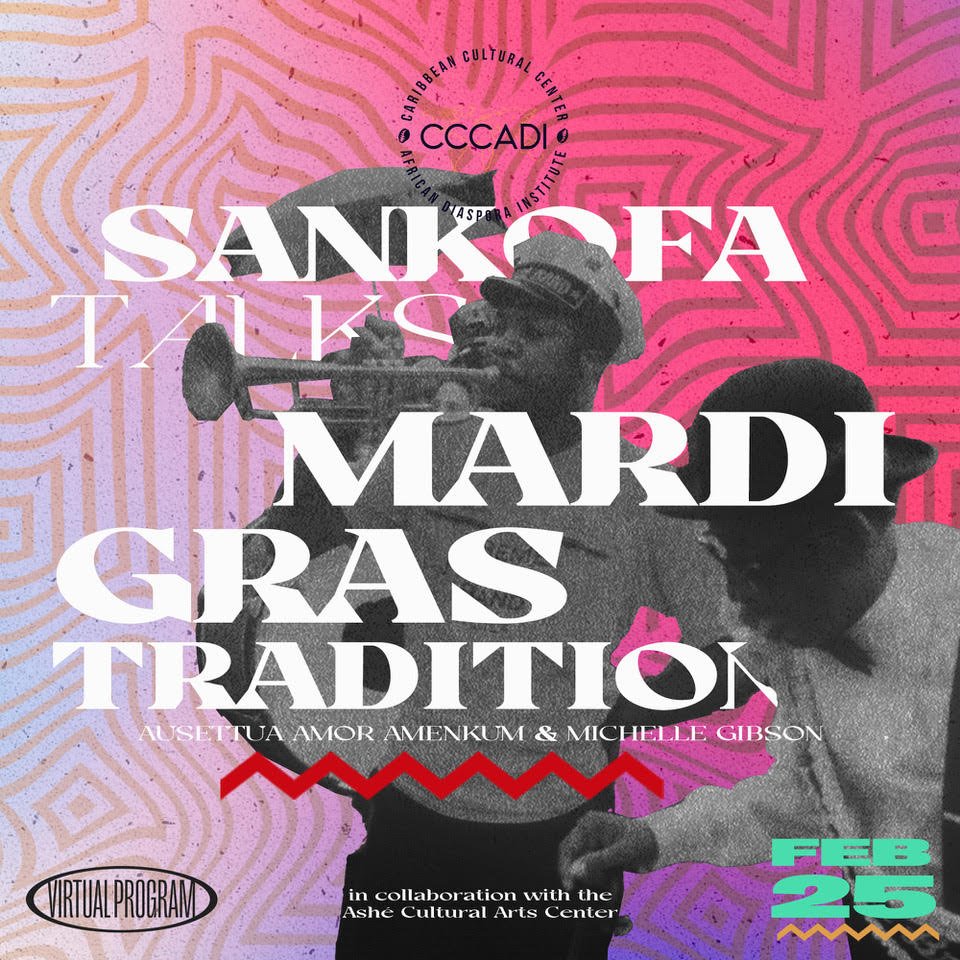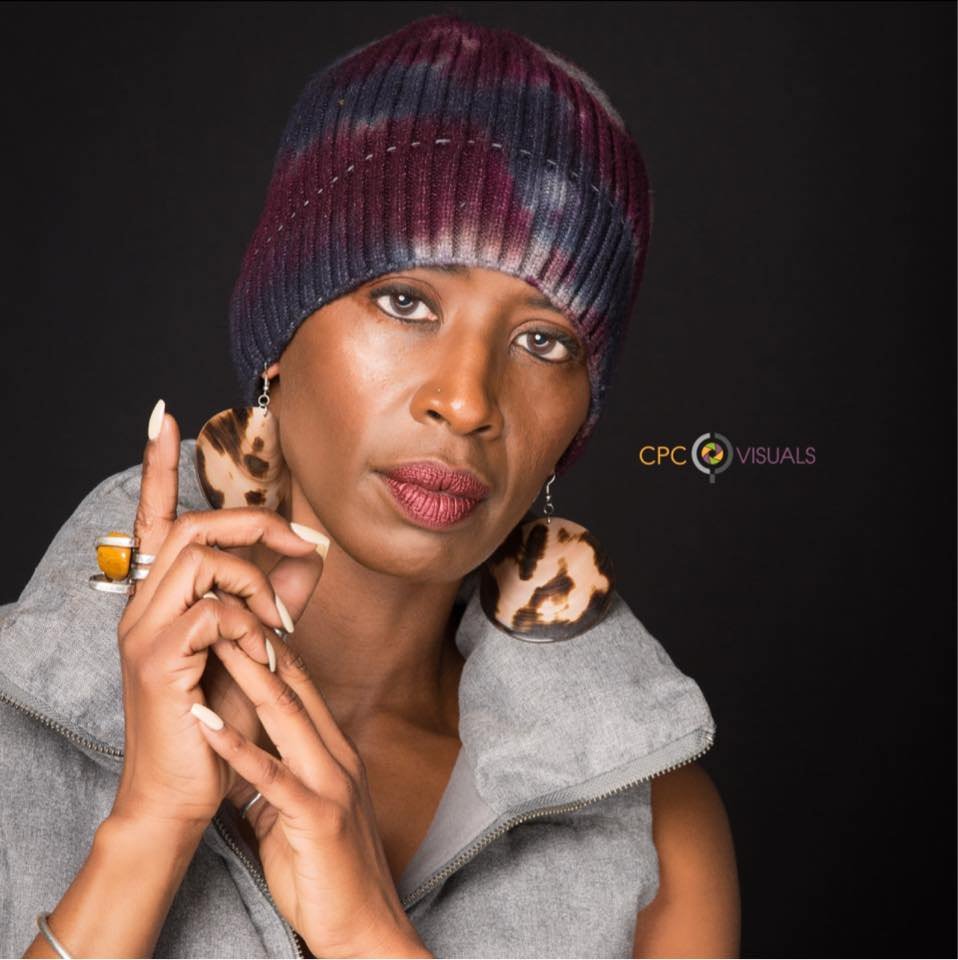Intergenerational conversations within African Diasporic movements.
“Sankofa” is a West African word of the Akan tribe that translates to, “it is not taboo to fetch what is at risk of being left behind.”
Sankofa Talks is The Caribbean Cultural Center's platform to bring intergenerational conversations to the public. Through each talk they take time to retrieve and honor our Diaspora’s history, reflect on its contributions to our present and recognize the power it has to inform how we move forward into the future.
In partnership with CCCADI, this upcoming installment will commemorate Mardi Gras, celebrated this year on March 1, 2022.
New Orleans, Louisiana is famous for its Carnival and Mardi Gras celebration. However, mainstream depictions of Mardi Gras are often limited to “spring break” partying in the French Quarter. This Sankofa Talks program will feature an in-depth exchange between two New Orleans natives exploring Mardi Gras traditions from their respective lenses as culture bearers. They’ll counter the mainstream narrative by sharing with us the rich, Black culture of past and present Mardi Gras Masking Indian and Second Line traditions in New Orleans.
This program will premiere on February 25th at 11 am (CST). You will be able to watch this discussion on this page, our Facebook or Youtube.
GUEST SPEAKERS:
Ausettua Amor Amenkum
Ausettua Amor Amenkum
Artistic Director of Kumbuka African Drum and Dance Collective
Ausettua Amor Amenkum was led by the quest for knowledge, interest in African retention in African-American cultural expressions, and social and cultural activism to participate in the Black Indian masking culture. She masked with Big Chief Donald Harrison Sr until his death. In 2006, she accepted Big Chief David Montana's invitation to serve as his queen with Yellow Pocahontas and Washitaw Nation.
Ausettua uses her role as Big Queen to increase self-esteem and to celebrate African-American women's contributions to New Orleans' indigenous cultural expression, religion, and spirituality. She received the 2009 Mardi Gras Indian Hall of Fame's Queens' Choice "Rising Star" Award.
Michelle
Gibson
Michelle Gibson
New Orleans Native, Michelle Gibson, is a choreographer, cultural ambassador, educator, performing artist, Alvin Ailey Alumni, and present candidate of Katherine Dunham Technique Certification. She roots her artistry from her New Orleans background of buckshop. She is also an alumni of Tulane University and Xavier Prep High School and the New Orleans Center for Creative Arts. Michelle N. Gibson’s choreographic works range from genres of the African Diaspora, Contemporary Modern, Afro Funk, Jazz, and her own New Orleans Second Line Aesthetic.
Gibson moved to Dallas in hopes of starting a new life for herself as an artist. She started teaching high school majorette teams in Dallas ISD. Dallas thought they were getting a dance teacher but she has become so much more. She changed the lives of so many young ladies, from teaching modern, to how to take care of your body, self-care, and living for a purpose. She is truly a mother of dance. She has continued spreading her love and teachings of dance and life at Booker T. Washington High School for the Performing and Visual Arts. She also turned a little street dancer like myself into a beautiful young woman.
The most beautiful thing about Gibson is her soul. She is truly a giving spirit. Gibson holds classes for young ladies and children who can't afford to go and take class at a fancy studio. She always says that dancers are born not made. She shares her gifts out with everyone. She always says everyone deserves a chance to be great so she does just that. Holding class in low-income areas, and even meeting in store parking lots to hold open classes. She makes a space for everyone.
As a preacher’s daughter and New Orleanian, Gibson’s upbringing was deeply rooted in the A.M.E church where her father, the late Rev. B.A. Gibson, served and the streets of New Orleans where second-line culture boomed. She says, “When I put myself in the street, the church still lives inside of me through the second line. I feel something deeper — a root that came from the old Black church.”
All events are subject to change.
Posted in EXCHANGE



